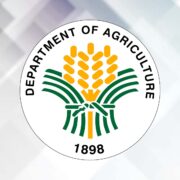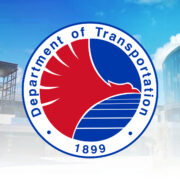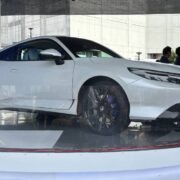Highway to the rainbow bridge

A truly heartbreaking scene played out in the early morning hours of May 11 on the East-West Highway in Perak, Malaysia. Local news reported a young elephant run over by a truck transporting chickens. Yusoff Shariff, the Director of the Perak Wildlife Protection and National Parks Department, reported that “a male elephant, estimated to be 5 years old, died after it was believed to have been hit by a lorry while trying to cross the road.”
The mother elephant reportedly immediately rushed to the scene, visibly distressed, and refused to leave her baby, even trying desperately to nudge the truck off her dead calf. She stayed by her child for hours, despite efforts by bystanders to lead her away. Wildlife department officials needed to tranquilize her to clear the highway.
This wouldn’t be the first, and last, tragedy that will happen in that area. The Strait Times wrote that the East-West Highway has seen several encounters between humans and elephants, as the animals struggle to cope with a dwindling habitat.
And this isn’t just a problem with this particular highway. In fact, wherever and whenever human habitation expands, where new roads are built, more animals’ lives are needlessly placed in peril. Roadkill has become such a common occurrence, many of us don’t give a second look when we see dead animals by the side of the roads. I don’t have the exact numbers of animals killed worldwide by on-road collisions with vehicles. But if you see one badly injured carabao, all legs broken by the force of the vehicle’s impact, painfully dragging its own body by the side of the road, then that one casualty should be enough.
Of course, we can’t blame the animals for not understanding our unnatural ways of moving about. But we haven’t given them much of a choice to avoid us, either. Bullies force everyone else to adjust, and humans have become bullies of the natural world. We force ourselves into other animals’ living spaces and make them our own spaces. The animals? Confused and lost, they try to find a new space for themselves. They step foot on a clearing they are totally unfamiliar with, and then here comes a speeding metal beast—another creature they are totally unaware of—and before they know it, they’re mortally wounded, crushed by tons of metal, rubber, and plastic. We took away their lands, and then took away any safe passages for escape.
While reading online for any good endings to these sad stories, I asked renowned urban planner and architect Felino “Jun” Palafox if it would be workable for government and civil society to promote and construct wildlife crossings or bridges to prevent them from crossing highways. Palafox replied that his team has incorporated animal crossings on their urban designs of road transport corridors. “We won the DOTr project: Active Transport Masterplan: Walking, biking, public transport,” he disclosed. Palafox, however, did not elaborate how he incorporated safe wildlife crossings in his masterplan.
A month ago, I read about a public-private partnership project that began in 2022, in what is now known as the world’s largest wildlife crossing taking shape in Los Angeles, called the Wallis Annenberg Wildlife Crossing. It features the world’s largest wildlife bridge, at 210 feet (64 meters) long and 174 feet (53 meters) wide. The Guardian wrote that this wildlife crossing across the 101 Freeway will connect two parts of the Santa Monica mountains for animals.
The Guardian writer Katharine Gammon said that the plot is a native wildlife habitat that connects two parts of the Santa Monica mountain range, with the hopes of saving creatures—from the famous local mountain lions, down to frogs and insects—from being crushed by cars on one of the nation’s busiest roadways.
As most wildlife bridges and underpasses around the world are made of cement and steel, this one has soil placed over the bridge. “Covering the entire surface of the crossing will require approximately 6,000 cubic yards of soil. After the soil is in place, workers will plant 5,000 native plants, including sages, buckwheat, milkweed, sunflowers, deerweed, penstemon, toyon and laurel sumac.
“With nearly an acre of local plants on either side and thick vegetated sound walls 12 feet high to dampen light and noise for nocturnal animals as they slip across, it’s an unprecedented feat of engineering. Imagination, too,” wrote Gammon.
Needless to say, what is being achieved in Los Angeles is largely due to political will and the resolve of its civil society. It isn’t that easy to take wildlife into consideration when a human society is hard-put to make ends meet. In developing countries such as ours, economic growth is a community’s general priority. The implications of that growth on the environment? Well, let’s try to fix that later, if ever harm has been done.
This brings to mind what I saw as a looming threat to endangered wildlife in Occidental Mindoro. In a recent trip to the island province to cover a mobility-related activity, we traversed the Victoria-Sablayan Road overlooking the Amnay River. The road was still in the early stages of construction, but was already passable for trucks, jeeps, SUVs and utility vehicles. Later on, a source told me that the road would dissect or divide a known Tamaraw habitat, the Upper Amnay Tamaraw Range or the Inner Upper Mindoro, and cut through the FB Harrison Wildlife Sanctuary. The construction would also reportedly cut thousands of trees and displace countless living beings, including the critically endangered Tamaraw species.
Roadworks, however, have stopped for the time being due to a cease-and-desist order pending the project’s acquisition of an Environmental Compliance Certificate from the City Environment and Natural Resources Office (CENRO).
My fear is that once the ECC is granted and the CDO lifted, the roadworks will resume. And then again, like so many times before in so many places around the world, a highway has crossed a wildlife habitat. The roadkill has begun even before the first cars take to the road.


















